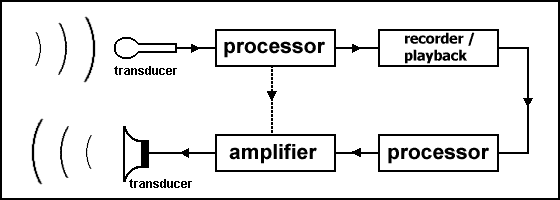CPS has two policies related to promotion: one at the elementary school level, and one at the high school level.
The Elementary School Promotion Policy (605.2) applies to promotion at the "benchmark" moments at the end of 3rd, 6th, and 8th grades. In the past, ISAT scores and grades were used in these decisions. But this year, with the ISAT having been abandoned, a revised version of the policy (for the current academic year) was created that uses the NWEA (otherwise known as "MAP") scores. The revised policy is fairly intricate. Without going into the details, you can see its intricacy just by glancing at this screenshot:
Students are divided into "achievement levels" based on their NWEA percentiles, and then promotion (and the need for summer school) are determined from grades. NWEA percentiles "in both reading AND math at or above the 24 percentile" and "passing grades for reading and math" are necessary for the top achievement level, which indicates promotion without summer school (and in 8th grade, participation in the graduation ceremony). Elsewhere in CPS policies, "passing" is defined as a "D average or higher."
All well and good.
The High School Promotion Policy (605.1) is different. It doesn't rely on the NWEA scores, but instead relies on number of credits and number of "passing" scores in the "core courses" (English, Math, Science, and Social Studies). For promotion from 9th to 10th grades, for example, a student has to complete the year with at least 5 units of credit, and must pass at least three of their core courses (during both semesters).
Again, all well and good.
The interesting situation (and the one that I'm now wrestling with) is in the so-called "Academic Centers," which are selective enrollment schools that serve 7th and 8th grade students and are located in high schools. In the academic centers, 7th and 8th grade students (who are admitted based on their scores on an entrance exam) take high school classes. According to the larger Elementary Promotion Policy (605.2) that is still in effect (except for the use of the ISAT),
"Eighth grade students attending an Academic Center, as described in the Board’s Magnet Schools and Programs Policy, are enrolled in a high school and taking high school level courses and therefore are not subject to the requirements of this policy."(I don't know what "the Board's Magnet Schools and Programs Policy" refers to, except maybe the admissions policy, 602.2, which doesn't mention "promotion.")
So, what policy applies to the 8th graders in the academic centers? Not the Elementary School Promotion Policy, clearly. Then the High School Promotion Policy? That's not clear, because the high school promotion policy doesn't actually mention students in the academic centers. Nor does it deal with 8th graders. Specifically, the policy doesn't spell out how many courses need to be passed, at what level, or how many high school credits are needed for promotion from 8th to 9th grades.
So what's the applicable policy?
Well, I've inquired about this. The answer I got from a principal of a high school that contains an academic center is somewhat surprising. He refers to another policy (605.5), which is "Awarding High School Credit and Placement for High School Level Courses Taken by Elementary Grade Students." Interestingly, this policy also does not mention "promotion."
However, according to the principal, this policy on awarding high school credit provides the criteria to determine whether an academic center student is promoted from 8th to 9th grade.
UPDATE 4-30-15: I have been in contact with someone in CPS's central office and she tells me that the principal is actually wrong, and said that someone will be in touch with him to correct his interpretation.
UPDATE 2, 4-30-15: This isn't over. The principal just sent me an email defending higher promotion standards for academic center students because they are gifted. (!)
What's somewhat troubling about this is that the standard is higher than it is for promotion in either the elementary promotion policy or the high school promotion policy. A "C average or better" is used to determine if elementary students (including academic center students, apparently) have "passed" their high school classes. My guess is that this is intended to "raise the bar" for elementary students getting high school credit: if they can't get a "C" or better in a high school class, well, then, they shouldn't get credit but should have to wait until high school to get that credit.(I suppose this makes sense?)
So according to this principal, an 8th grade student in an academic center must get at least a "C" average in his "English and math" courses in order to be promoted to the 9th grade. Keep in mind that the English and math courses that an 8th grade academic center student is taking are high school courses.
So, according to this principal, the standard for an 8th grade student at an academic center to be promoted to the 9th grade is significantly higher than for a regular 8th grade student (i.e. one not at an academic center) to be promoted to the 9th grade. Let me spell this out. According to this principal's interpretation:
In other words, it is easier for an 8th grade student at a regular elementary school to get into 9th grade than it is for an 8th grade student at an academic center to get into 9th grade. WHAT?!?!
In the specific case that concerns me, if the student had stayed in his regular elementary school, he would have to get "D" averages or better in his 8th grade reading and math classes (and get above a certain score on the NWEA) in order to be admitted into 9th grade at his neighborhood high school.
But because he scored high enough on the academic center selective enrollment exam in 6th grade, he needs to get "C" averages or better in his 9th grade reading and math classes to get admitted into 9th grade at the very same neighborhood high school. And his scores on the NWEA are not relevant to the decision.
Is it just me, or does this raise due process issues?
(Comments welcome.)
What's somewhat troubling about this is that the standard is higher than it is for promotion in either the elementary promotion policy or the high school promotion policy. A "C average or better" is used to determine if elementary students (including academic center students, apparently) have "passed" their high school classes. My guess is that this is intended to "raise the bar" for elementary students getting high school credit: if they can't get a "C" or better in a high school class, well, then, they shouldn't get credit but should have to wait until high school to get that credit.(I suppose this makes sense?)
So according to this principal, an 8th grade student in an academic center must get at least a "C" average in his "English and math" courses in order to be promoted to the 9th grade. Keep in mind that the English and math courses that an 8th grade academic center student is taking are high school courses.
- An 8th grade student at a regular CPS elementary school is promoted to the 9th grade if his NWEA percentiles in reading and math are at or above 24 and if his grades in his 8th grade reading and math courses are passing (i.e. "D" average).
- An 8th grade student at an academic center is promoted to the 9th grade if his grades in his 9th grade reading and math courses are a "C" average or above.
In other words, it is easier for an 8th grade student at a regular elementary school to get into 9th grade than it is for an 8th grade student at an academic center to get into 9th grade. WHAT?!?!
In the specific case that concerns me, if the student had stayed in his regular elementary school, he would have to get "D" averages or better in his 8th grade reading and math classes (and get above a certain score on the NWEA) in order to be admitted into 9th grade at his neighborhood high school.
But because he scored high enough on the academic center selective enrollment exam in 6th grade, he needs to get "C" averages or better in his 9th grade reading and math classes to get admitted into 9th grade at the very same neighborhood high school. And his scores on the NWEA are not relevant to the decision.
Is it just me, or does this raise due process issues?









